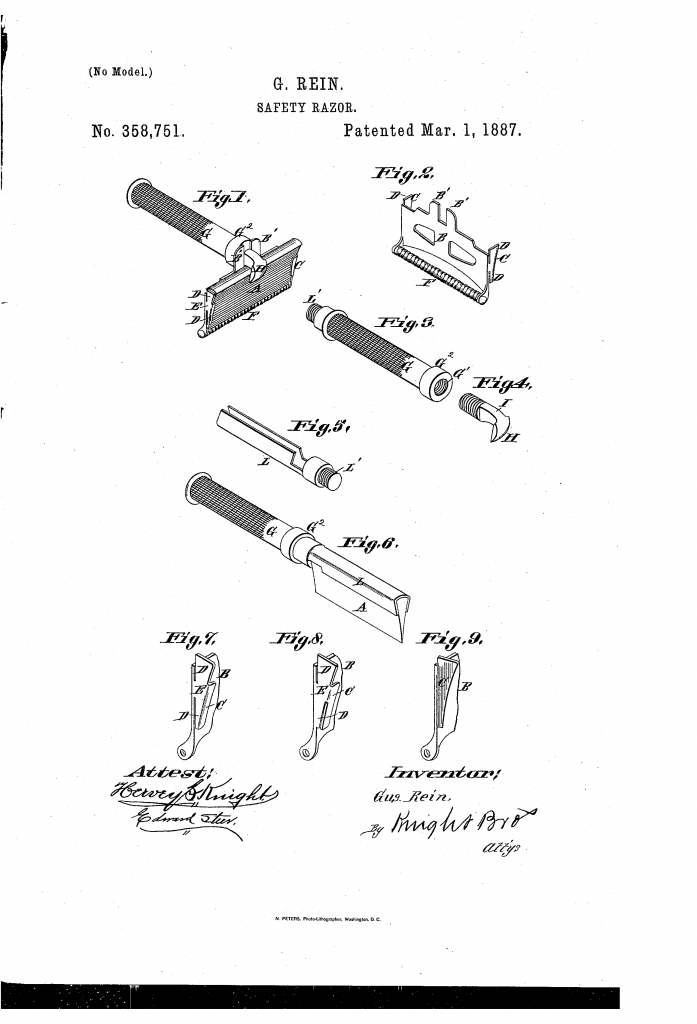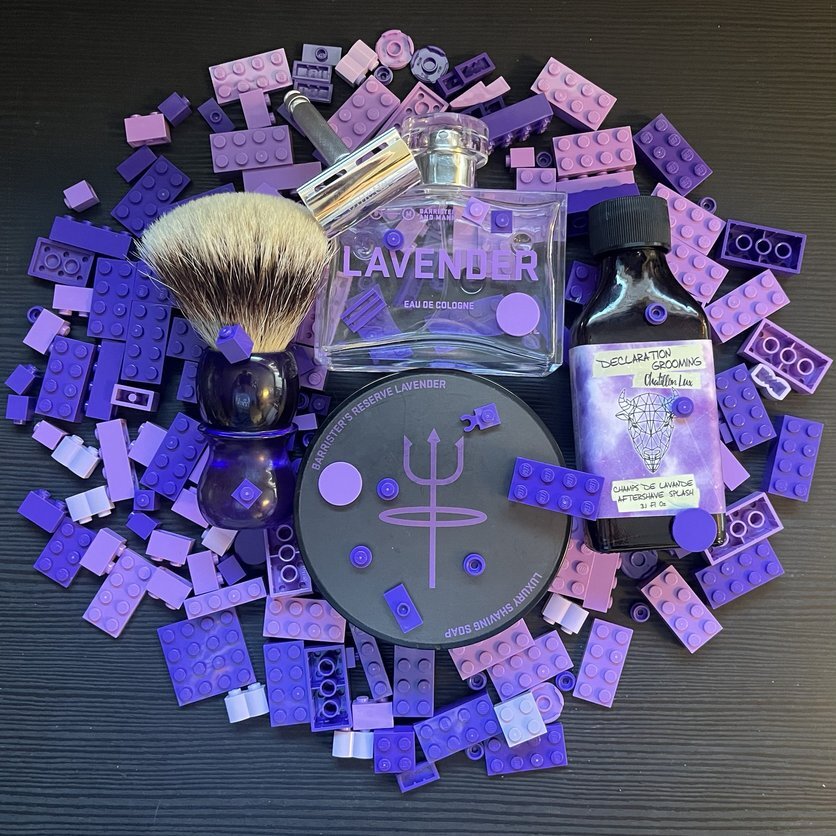The origin of the term ‘safety razor’ is a little unclear. As documented over at razors.click, the term did not originate with the Kampfe brothers as so often claimed. But no matter who came up with it, or when, it was in common enough use by 1887 that Gustavus Rein explicitly used it both as the title and in the body of his patent. Which is interesting enough, but what really caught my attention is that the razor that Gustavus Rein patented was a twofer. Not only was it a hoe-style wedge razor, but it could also be used as what we today would call a shavette.
Not that Gusavus Rein had the last usage in mind, mind you. More on that later, lets first have a look at what his razor was.
It was, naturally for 1887, a wedge razor. The thin, easily replaceable and disposable blade wouldn’t be thought of for another fifteen or so years. Instead Gustavus Rein, as the Kampfe brothers, used a blade which had the same cross section – more or less – as a straight razor.
This blade was held between a plate1 and a hook.2 The plate had a roller guard and blade stops mounted. The handle screwed on to threads on the hook. Tighten the handle, and the hook, plate, and handle is held together.
Or as the patent text explains it:
H represents a dog threaded to enter a socket, G’, in one end of the handle G. This dog has a non-circular portion, I, between its head and the screw H, which fits between lugs B’, extending upward from the plate B, and against one side of which an enlarged end, G2, of the handle G bears, as shown in Fig. 1. The dog engages the blade, as shown in Fig. 1, and it will be understood that when the dog is placed over the blade with the neck I between the projections B, and the handle screwed up tight against the projections, the blade and handle will be held firmly connected to the plate B. When it is desired to disconnect the parts and remove the blade, it is only necessary to unscrew the handle slightly, when it (carrying the dog with it) can be moved upward away from the blade and its supporting-plate, and the blade is then free to be moved from the plate. This method of connecting the blade to the supporting-plate is simple, durable, and cheap, and is effective in holding the parts together

Patent drawing from US patent 358,751, showing the safety razor invented by Gustavus Rein
Figure 5 in the drawing shows a blade holder. Gustavus Rein intended this to be used to hold the blade for honing and stropping. To my eyes however it would also be just the thing for turning the razor into a shavette. I mean, just look at figure 6 and tell me that don’t look like a shavette? And when not in use – for sharpening or shaving – the blade holder could be stored in the hollow handle.
It should be fairly easy to modify the razor to use a GEM blade. You would have to redesign the blade stops. The hook ought to be shorter. And the blade holder would have to be a lot narrower to hold a modern GEM blade. But it would be doable.
You can read the full patent for the Gustavus Rein’s3 safety razor at Google Patents – and at razors.click too.
-
Labelled B in the drawings
-
Termed a dog in the patent and labelled H in the drawings.
-
I like the name Gustavus by the way, if you couldn’t tell – it has a very old-fashioned ring to it.

